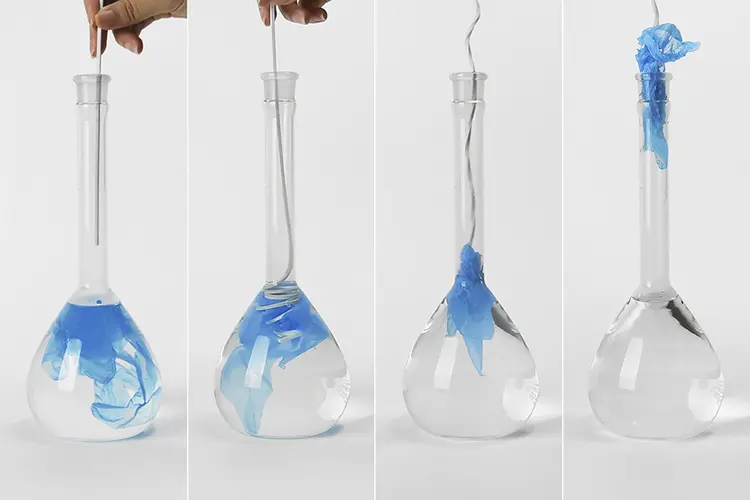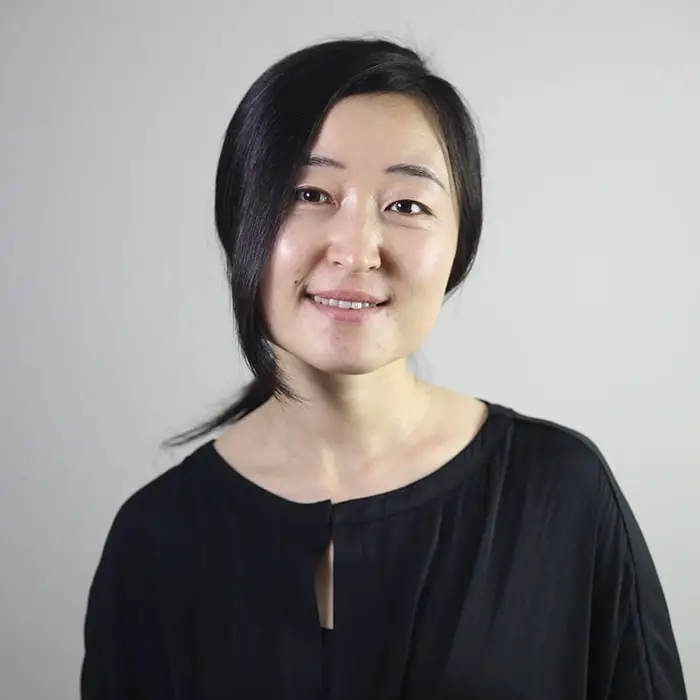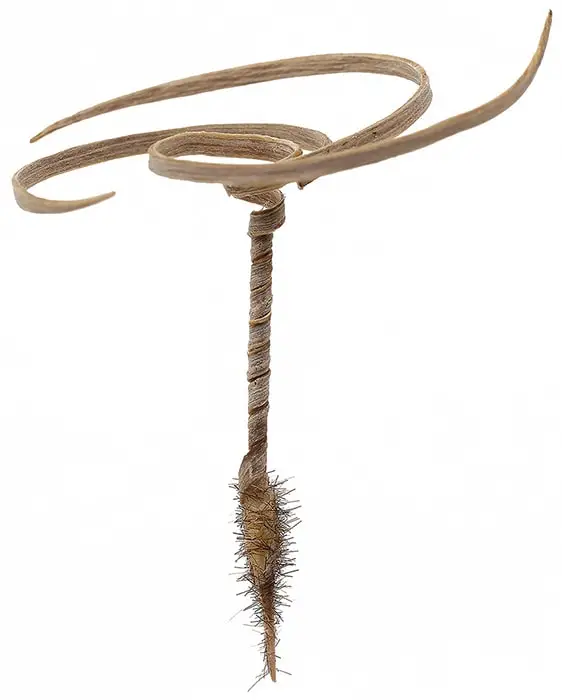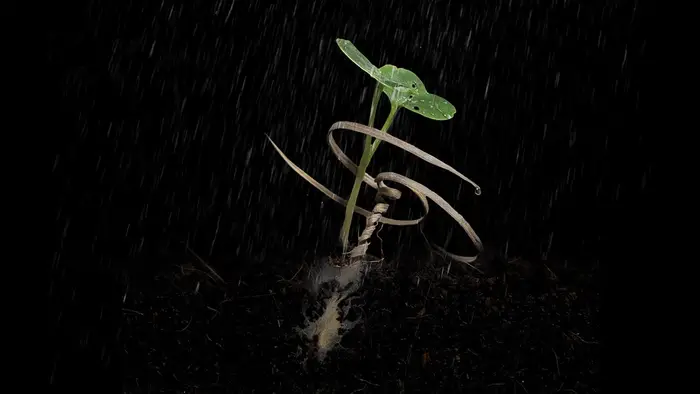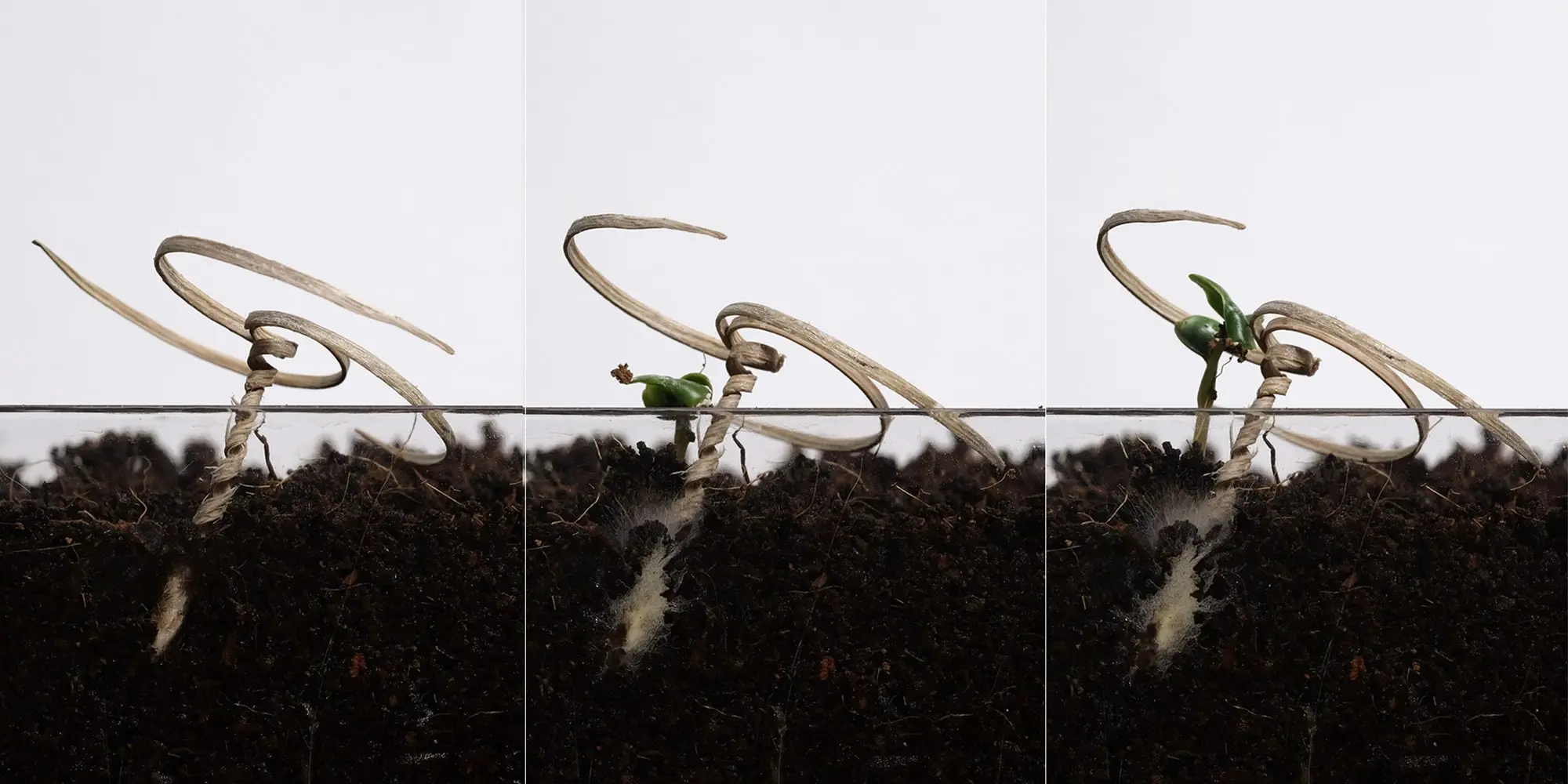
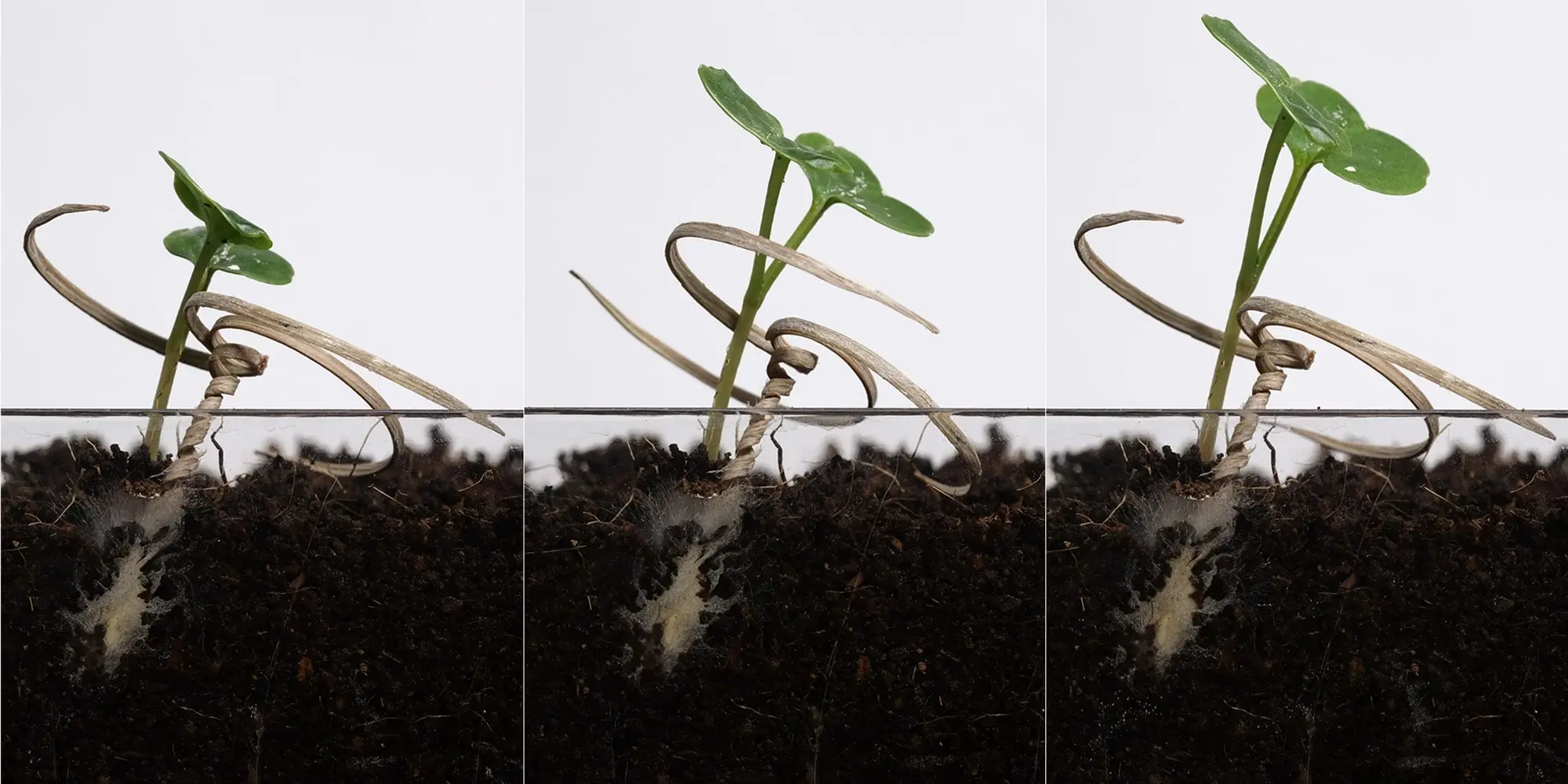
Engineered Magic: Wooden Seed Carriers Mimic the Behavior of Self-Burying Seeds
Geometric design and engineering of biodegradable materials could improve versatility, efficiency of aerial seeding
Media Inquiries
How seeds implant themselves in soil can seem magical. Take some varieties of Erodium, whose five-petalled flowers of purple, pink or white look like geraniums.
The seed of these plants is carried inside a thin, tightly wound stalk. During rain or high humidity, the corkscrew-like stalk unwinds and twists the seed into the soil, where it can take root and is safe from hungry birds and harsh environmental conditions.
Inspired by Erodium's magic, Lining Yao(opens in new window), the Cooper-Siegel Assistant Professor of Human-Computer Interaction at Carnegie Mellon University, worked with a team of collaborators to engineer a biodegradable seed carrier referred to as E-seed. Their seed carrier, fashioned from wood veneer, could enable aerial seeding of difficult-to-access areas, and could be used for a variety of seeds or fertilizers and adapted to many different environments. It's an idea that Yao, the daughter of part-time farmers, has pondered since she was a Ph.D. student at MIT in the mid-2010s.
"Seed burial has been heavily studied for decades in terms of mechanics, physics and materials science, but until now, no one has created an engineering equivalent," said Yao, director of the Morphing Matter Lab(opens in new window) in the School of Computer Science(opens in new window)'s Human-Computer Interaction Institute.(opens in new window) "The seed carrier research has been particularly rewarding because of its potential social impact. We get excited about things that could have a beneficial effect on nature."
The team's research appeared in the February issue of Nature(opens in new window).
Danli Luo, a former research assistant at the Morphing Matter Lab and the lead author of the Nature paper, said design and construction of the seed carrier were inspired by the self-burying mechanism that Erodium evolved as it adapted to arid climates.
Erodium's stalk forms a tightly wound, seed-carrying body with a long, curved tail at the top. When it begins to unwind, the twisting tail engages with the ground, causing the seed carrier to push itself upright. Further unwinding creates torque to drill down into the ground, burying the seed.
But Erodium's one-tailed carrier only works well on soils with crevices. To employ their E-seed carriers in a broader range of environments, the research team developed a three-tailed version (pictured) that is more efficient at pushing itself upright.
"Geometry can enhance the functionality of the materials beyond what nature offers us. It also makes the design versatile to be applied to other materials," said Shu Yang, a materials scientist and co-author from the University of Pennsylvania.
The researchers considered a number of possible materials for their carriers, including hydrogels, paper and other forms of processed cellulose. They ultimately chose veneers of white oak — a species of tree abundant in Schenley Park adjacent to the CMU campus in Pittsburgh — and widely used in furniture. Like Erodium, veneers respond to moisture.
"Seeds have a magic response to rain," Yao said.
Growing up in Inner Mongolia, Yao learned early from her parents the importance of timing the seeding process with the prospect of rain. Her appreciation for that timing grew during this project, as the researchers did plenty of field testing of the carriers, rather than just lab tests. That meant they had to keep their eyes on the weather, rushing the carriers to a test field when rain was in the offing.
The team developed a five-step process including both chemical washing and mechanical molding to manufacture the seed carriers. Although the carriers are currently fabricated in the lab, the researchers anticipate adapting the process to an industrial scale.
"Making E-seed through digital design and fabrication methods is crucial for our long-term goals," said Guanyun Wang, a former postdoctoral researcher in the Morphing Matter Lab who continued on the project after assuming a faculty position at Zhejiang University.
In addition to seeds, the researchers demonstrated they could use the carriers to deliver nematodes (worms used as natural pesticides), fertilizers and fungi. Work is also underway to adapt them for planting seedlings.
"Gaining insight into the mechanics of wood and seed drilling dynamics leads to improved design and optimization," said Teng Zhang, associate professor of mechanical and aerospace engineering at Syracuse University, who performed modeling and simulations to explain the working mechanism of the wood actuators and the benefits of E-seed's three-tailed design.
These applications were possible thanks to a user study conducted by Aditi Maheshwari and Andreea Danielescu from Accenture Labs, who interviewed subject matter experts in reforestation, agriculture and soil health management to inform the applicability of E-seed in the real world.
"Understanding real-world applications of bioengineered technologies like E-seed is crucial for advancing ecological design," said Maheshwari, research and development principal at Accenture Labs, who works on sustainable materials and environments.
Andreea Danielescu, director of the Future Technologies R&D group (research and development) at Accenture Labs, said E-seed can improve ecological resilience.
"Technologies like E-seed can help us address real-world problems — helping us avoid landslides, reducing the impact of invasive species and improving reforestation of hard-to-reach places," Danielescu said.
The carriers also could be used to implant sensors for environmental monitoring. They might also assist in energy harvesting by implanting devices that create current based on temperature fluctuations.
"The interest in the research from agriculture, forestry and other disciplines has been encouraging," Yao said. But perhaps one of the most important endorsements came from a source close to her: her father, the part-time farmer.
"When I mentioned the idea to him, he got it immediately."
— Related Content —
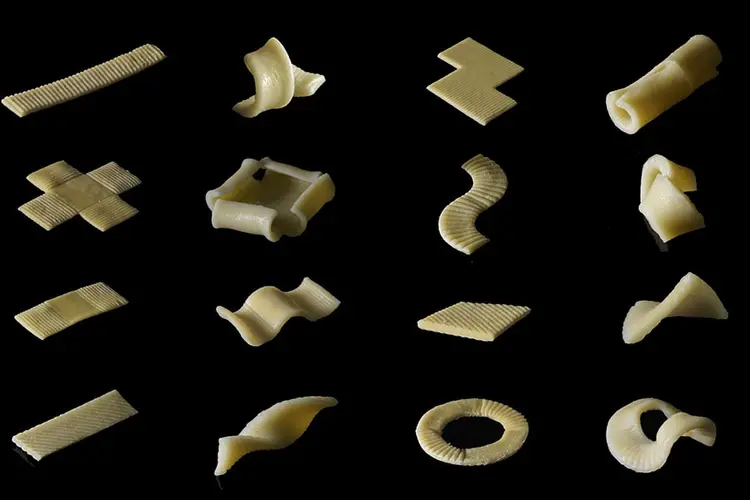
CMU Lab Leads Development of Morphing Pasta
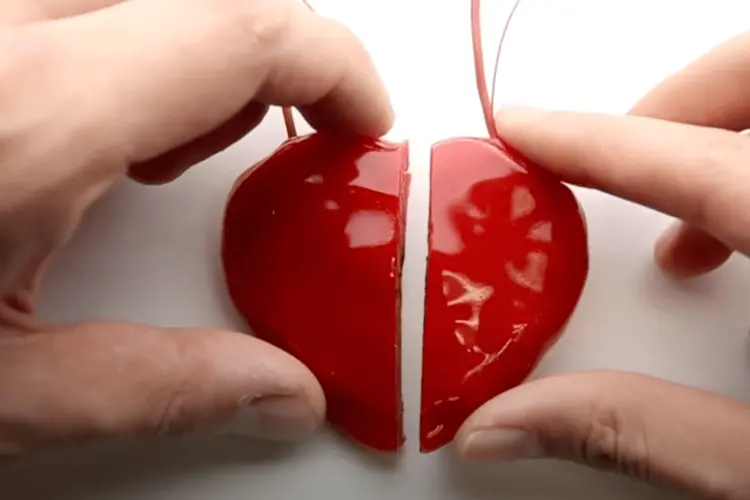
Self-Healing Devices Gain or Regain Function After Being Cut
